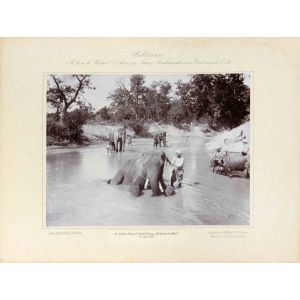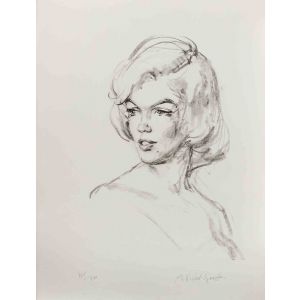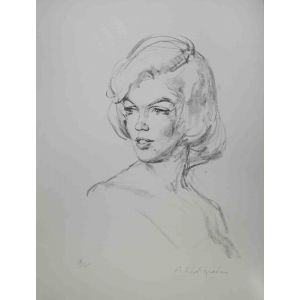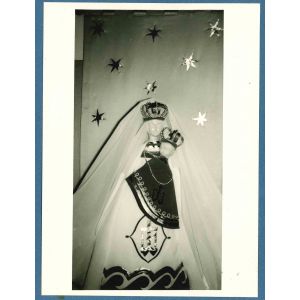Portrait of Monica Vitti
Portrait of Monica Vitti is a vintag b/w photograph realized by Agenzia ANSA in the 1970s. Good condition.
Monica Vitti is born in Rome on November 3, 1931. Admitted in 1950 to the Academy of Dramatic Art (where she will return in 1986 as a teacher), and graduated in 1953, she immediately tackles the scenes in L'avaro di Molière (1954), The island of the parrots of S. Tofano (1954), They founded a city of C. Meano (1954), Mother Courage and her children of B. Brecht (1954). Between 1956 and 1959 she also participated in television broadcasts and acted in numerous adaptations of famous theatrical texts. She made her film debut playing secondary parts in Laugh, Laugh, Laugh! by E. Anton, 1955; A mink coat by G. Pellegrini, 1956; Le dritte di M. Amendola, 1958. Dubbing actress of Il scido di M. Antonioni (1957), she meets the director who, after having directed her to the theater in I am a camera by J. Van Druten (1957) and in Secret Scandals by Antonioni and E. Bartolini (1957), he calls her as the protagonist in L'avventura (1960), a film with which V. is a leading actress. Always led by Antonioni, from now on she will play suffering characters who embody a profound crisis of feelings. Apart from a brief television parenthesis (a transposition of the short story The White Nights by F. Dostoevskij, directed by V. Cottafavi), La notte (1961), L'eclisse (1962) and Deserto rosso (1963) belong to a happy partnership with Antonioni (who will be revived episodically for the production of The Mystery of Oberwald [1980], a courageous experiment of intertwining cinema and electronic techniques, propitiated by the exhumation of a play by J. Cocteau, L'aigle à deux têtes). In the second half of the Sixties, however, the producers showed that they preferred her as an actress endowed with caricatural flair, fine humor, vitalistic exuberance, communicative immediacy; and audiences pay her a growing success, not always corresponding to the quality of her filmography or the variety of her interpretations, among which are the very convincing ones in Modesty Blaise by J. Losey (1966), I married you for joy by L. Salce (1967), The girl with the gun by M. Monicelli (1968), My love, help me by A. Sordi (1969), Drama della jealousy by E. Scola (1970), La Tosca by L. Magni (1973).











































Validate your login
Sign In
Create New Account